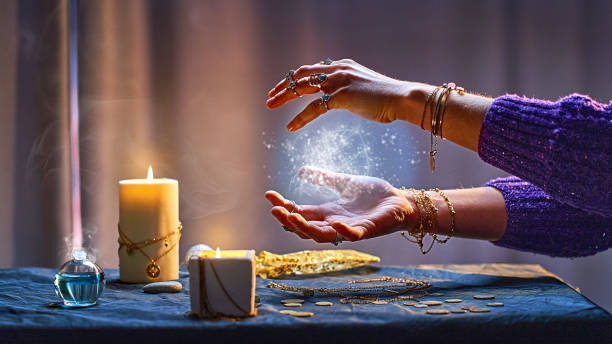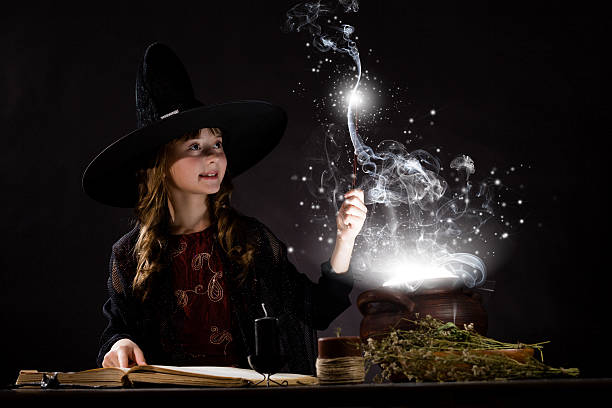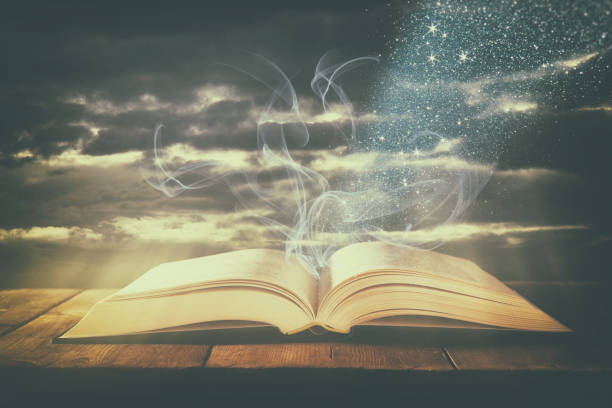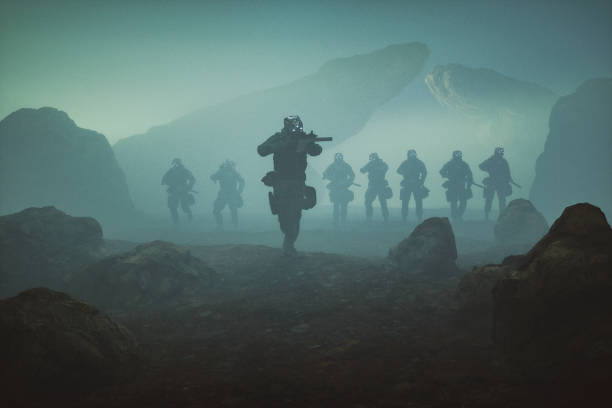How To Describe Magic In writing (12 Steps You Need To Know)
Magic, that age-old enchantment, has woven its mystical tapestry into the very heart of storytelling. It is a force that defies the laws of nature, captivating our imaginations with its limitless possibilities.
To describe magic in writing is to embark on a journey where words become spells, and sentences conjure worlds where the mundane surrenders to the extraordinary.
It is an art that beckons readers to traverse the realms of wonder and mystery, evoking emotions and sparking the fires of curiosity.
In the pages that follow, we will delve deep into the art of describing magic in writing, exploring the techniques, nuances, and storytelling magic that breathe life into fantastical realms and enchanting characters.
Whether you are an aspiring writer seeking to conjure your own worlds of wonder or a reader eager to unravel the secrets behind your favorite tales of enchantment, this guide will serve as your spellbook, guiding you through the incantations of literary sorcery.
So, let us embark on this mystical journey together, where the mundane becomes magical, and words become the key to unlocking the extraordinary.
How To Describe Magic In writing
Describing magic in writing involves creating a sense of wonder and mystique through words. Here’s a step-by-step process to help you do that effectively:
Understand Your Magical System
Before you start describing magic, have a clear understanding of how magic works in your world. Is it based on spells, rituals, objects, or innate abilities? Knowing the rules and limitations is crucial.
Choose Your Perspective
Decide whether you want to describe magic from the perspective of a character using magic or from an observer’s viewpoint. This choice will affect the language and tone you use.
Set the Scene
Begin by establishing the setting and mood. Describe the surroundings, time of day, and any relevant atmospheric conditions. A mysterious or otherworldly setting often enhances the magical atmosphere.
Build Suspense
Create anticipation by hinting at the magical event before it happens. Mention any signs or premonitions that something extraordinary is about to occur.
Use Vivid Imagery
Describe the magical elements with rich, sensory details. Appeal to the reader’s senses by using sight, sound, touch, taste, and smell. Compare the magical phenomena to familiar things to help the reader visualize them.
Invoke Emotions
Describe how the magic makes characters and observers feel. Capture their awe, fear, excitement, or whatever emotions the magic evokes. Use their reactions to convey the impact of the magic.
Choose Your Words Carefully
Use descriptive language that is both evocative and appropriate to the tone of your story. Metaphors, similes, and poetic language can enhance the magical atmosphere.
Show, Don’t Tell
Instead of simply stating that magic is happening, show its effects on the environment, characters, and objects. Use actions, dialogue, and sensory descriptions to reveal the magic.
Highlight the Unexplainable
Emphasize the mysterious and unexplainable aspects of magic. Make it clear that what’s happening defies the laws of the natural world, which adds to the sense of wonder.
Conclude with Impact
After describing the magical event, reflect on its consequences or the aftermath. How does it change the characters or the story’s direction? Leave a lasting impression on the reader.
Edit and Refine
Revise your description to ensure clarity and coherence. Eliminate any unnecessary details or repetitions, and make sure the description fits seamlessly into the narrative.
Seek Feedback
Share your description with others and gather feedback to see if it effectively conveys the sense of magic you intended. Use constructive criticism to improve your writing.
Remember that describing magic is not just about the supernatural; it’s also a means of deepening the reader’s connection to your fictional world and characters. Tailor your description to suit the tone and style of your story while maintaining a sense of wonder and enchantment.

Understanding the Essence of Magic
Magic, that ethereal and elusive force, dances at the intersection of dreams and reality. It is the shimmering thread that weaves through the tapestry of our imagination, defying the laws of nature and challenging the boundaries of our understanding.
In literature, magic is the key that unlocks doors to realms unknown, where the mundane gives way to the extraordinary, and where ordinary individuals are transfigured into wielders of enchantments.
To grasp the essence of magic is to embark on a journey into the limitless expanse of creativity, where worlds are conjured with the stroke of a pen, and the impossible becomes a tantalizing reality.
In this realm, the boundaries of what can be imagined are only limited by the boundaries of the human mind, making magic not just a literary device, but an invitation to explore the very essence of our own existence.
The role of magic in storytelling
Magic in storytelling is the enchanted bridge that connects the mundane with the miraculous, the ordinary with the extraordinary. It serves as a multifaceted narrative tool that breathes life into fictional worlds, imbuing them with wonder, intrigue, and a sense of the unknown.
Beyond its ability to captivate and entertain, magic plays a pivotal role in shaping the core elements of a narrative. It can propel the plot forward, igniting conflicts, bestowing characters with unique abilities, or presenting unforeseen challenges.
Moreover, magic infuses depth into character development, offering insight into the moral compass of protagonists and antagonists alike, as they grapple with the responsibilities and consequences of wielding supernatural forces.
In essence, magic in storytelling is a tapestry of mystery and symbolism, inviting readers to explore not only the fantastical landscapes it creates but also the intricate facets of human nature, belief systems, and the eternal quest for something beyond the ordinary.

Building a Magical World
In the alchemical laboratory of world-building, authors forge realms of enchantment that defy the laws of reality. Crafting a magical world is akin to painting a vivid dreamscape where the ordinary is transmuted into the extraordinary.
It’s a delicate dance between the architect and the muse, where the foundations are laid with meticulous detail, and imagination becomes the blueprint for entire civilizations.
These worlds shimmer with their own rules, cultures, and histories, each as diverse as the constellations in a starry sky.
Here, the mundane gives way to the mystical, and the everyday is enshrouded in an aura of otherworldly beauty.
Building a magical world isn’t just an art; it’s an act of conjuration, where words are spells, and authors are the wizards, summoning universes that invite readers to step through the looking glass and lose themselves in the infinite wonders of the imagination.
Setting the stage
Setting the stage in the realm of storytelling is akin to crafting the canvas upon which the narrative unfolds, and when it comes to a world imbued with magic, it becomes a tapestry of limitless possibilities.
Whether it’s a sprawling, enchanted forest cloaked in perpetual twilight or an opulent, mystical city that stretches beyond the horizon, the setting is the very crucible of a magical tale.
Here, authors wield their creative wands to establish the rules and limitations that govern their fantastical realms, weaving a delicate balance between the familiar and the fantastical.
Setting the stage is not merely about describing landscapes; it’s about building a sensory playground where readers can taste the ether of magic in the air, touch the arcane energies that course through the earth, and hear the whispers of ancient spells carried on the wind.
It’s in these richly detailed and immersive settings that the magic takes root, forging a powerful connection between the reader and the enchanting world they’ve been invited to explore.
Creating magical cultures
Creating magical cultures within the tapestry of a fantastical world is akin to molding civilizations from the very fabric of dreams.
These cultures are not merely shaped by the mundane forces of history and geography but are infused with the mystical essence that defines the world itself. In these societies, magic is not just a tool but a way of life, with its own rituals, beliefs, and hierarchies.
Whether it’s an order of wise and enigmatic spellcasters, a secretive tribe of shape-shifters, or a city where every stone hums with ancient enchantments, magical cultures provide a rich backdrop for storytelling.
They give rise to complex social dynamics, moral dilemmas, and questions of power and responsibility, all of which add depth and intrigue to the narrative.
Crafting these cultures is a journey into the heart of the fantastical, where imagination knows no bounds, and where readers can immerse themselves in the captivating interplay of magic and society, unraveling the mysteries of these enchanting civilizations one page at a time.
Describing magical creatures and beings
Describing magical creatures and beings is like capturing fragments of dreams on the page. These entities are the embodiment of the otherworldly, each a manifestation of the imagination’s boundless wonders.
From the majestic and benevolent creatures that soar through crystalline skies to the shadowy and enigmatic beings that lurk in the depths of ancient forests, their descriptions are a symphony of vivid imagery and mythical allure.
Every detail, from the iridescent scales of a dragon to the luminous eyes of a mystical fae, serves to transport readers into a realm where the ordinary laws of nature hold no sway.
These descriptions evoke not just the physical attributes but also the aura of these creatures, their role in the narrative, and the emotions they stir within both characters and readers.
In the dance between the magical and the mundane, describing these entities is an invitation for readers to venture beyond the veil of reality, to witness the extraordinary, and to kindle a sense of childlike wonder that lingers long after the final page has turned.
The Art of Descriptive Language
The art of descriptive language is a mesmerizing incantation, where words are wielded like the brushstrokes of a masterful painter, conjuring entire worlds and emotions in the minds of readers.
It is the symphony of sensory details, each note resonating with the reader’s senses, drawing them into the narrative’s embrace.
Metaphors and similes become the magic spells, transforming the ordinary into the extraordinary, and showing, not telling, becomes the secret passage to immersive storytelling.
In the hands of a skilled wordsmith, descriptive language is a potion of enchantment, making readers taste the sweet nectar of forbidden fruits, feel the whisper of the wind’s secrets on their skin, and see the universe in a single grain of sand.
It’s the alchemy of storytelling, where mere words are transmuted into a vivid tapestry that transports readers to worlds unknown, leaving them spellbound and forever under the enchantment of the written word.
Harnessing sensory details
Harnessing sensory details is the alchemy of storytelling, where words transform into a symphony that resonates in the minds and hearts of readers.
It’s the art of painting with words, allowing readers to not just see a scene but to feel it, taste it, hear it, touch it, and even smell it. With carefully chosen sensory details, an author can transport their audience to distant galaxies, ancient forests, bustling marketplaces, or the intimate chambers of a character’s soul.
It’s the rustle of leaves in a moonlit glade, the aroma of a sizzling street vendor’s delicacy, the texture of a dragon’s scale beneath trembling fingertips, and the haunting melody of a distant, long-forgotten song.
Sensory details awaken the imagination, breathing life into a narrative and forging an unbreakable bond between the reader and the story.
They are the portal through which the magic of a fictional world flows, ensuring that the enchantment lingers long after the book is closed.
Metaphors and similes
Metaphors and similes are the enchanting jewels of descriptive language, the hidden keys to unlocking the reader’s imagination.
They’re the shimmering threads that connect the known to the unknown, the ordinary to the extraordinary. Metaphors, like a sorcerer’s incantation, transform one thing into another, revealing hidden layers of meaning.
Similes, on the other hand, are like a beacon in the night, guiding the reader’s understanding with a gentle comparison. They breathe life into the narrative, making the abstract tangible, and the complex, relatable.
Whether it’s describing a character’s emotions as turbulent as a storm-tossed sea or a night sky as dark as a raven’s wing, metaphors and similes invite readers to view the world through a different lens, to experience the story on a deeper level, and to savor the delicious flavor of language’s boundless possibilities.
Characterizing Magic Users
Characterizing magic users is like navigating the intricate threads of a cosmic tapestry, where each individual’s connection to magic is a unique constellation in the night sky of storytelling.
Whether they are enigmatic wizards cloaked in ancient robes, or reluctant heroes grappling with newfound powers, these characters carry the spark of the supernatural within them.
Magic becomes more than just a tool; it’s a mirror reflecting their inner conflicts, desires, and vulnerabilities. The way they wield their magic, the rituals they perform, and the moral dilemmas they face all serve to define their essence.
Magic users are not just conduits for spells; they are complex souls whose relationship with magic is a reflection of the human condition itself—an exploration of power, responsibility, and the eternal quest for self-discovery.
As readers traverse the enchanting worlds these characters inhabit, they too embark on a journey of introspection, charting their own course through the galaxies of wonder and imagination that magic users help bring to life.
Developing magical characters
Developing magical characters is akin to sculpting intricate statuettes from the very clay of dreams. These characters are not mere vessels for mystical abilities; they are the crucible through which the essence of magic flows.
Whether it’s a wise and enigmatic sorcerer, a young and untrained prodigy, or a conflicted anti-hero grappling with the seductive allure of power, each magical character carries a unique blend of strengths and vulnerabilities, shaped by their supernatural abilities.
Their journeys are often fraught with perilous choices, moral quandaries, and the eternal quest to master their magical gifts.
As authors weave their narratives, these characters become both catalysts for enchantment and mirrors reflecting the human condition, inviting readers to delve deep into their own desires, fears, and potential as they journey through realms where magic reigns supreme.
The language of spellcasting
The language of spellcasting is the melodic symphony of the mystical, where words become potent incantations and phrases are the keys to unlocking the arcane. It is a lexicon of power, with each syllable carrying the weight of ages of mystic wisdom and intention.
These enchanting words, whispered in ancient tongues or spun from the very fabric of imagination, are the vehicles through which magic is channeled into the world.
The cadence and intonation, the resonance of vowels and consonants, all combine to create a unique and hypnotic linguistic dance.
Spellcasting language is more than just verbalization; it is the embodiment of the caster’s will and intent, a fusion of the mundane and the miraculous.
As readers immerse themselves in this enchanting lexicon, they are drawn into a world where language itself possesses the power to shape reality, where the act of casting a spell is not just a moment in a story but a testament to the limitless possibilities of human imagination.
Evolving magical abilities
Evolving magical abilities is akin to witnessing the metamorphosis of a caterpillar into a majestic butterfly, a transformative journey where power blooms and potential unfurls.
These abilities, often nascent and untamed at the outset, gradually mature, reflecting the growth and development of the characters who wield them.
From novice practitioners struggling to harness their first sparks of magic to seasoned sorcerers mastering intricate spells, the evolution of magical abilities parallels the characters’ own arcs of self-discovery and transformation.
These changes often come at a cost, demanding sacrifices, moral quandaries, and challenging choices, painting a dynamic canvas of both personal and supernatural development.
As the narrative unfolds, readers become witnesses to the fascinating evolution of these magical gifts, illustrating that the true magic lies not just in the abilities themselves but in the journey of the individuals who wield them, a journey of growth, resilience, and the unlocking of hidden potential.
Engaging the Reader’s Imagination
Engaging the reader’s imagination is like stoking the embers of a dormant dragon, coaxing it to breathe fire into the narrative’s vast world. It’s the art of planting seeds of wonder and nurturing them into towering forests of curiosity, where the reader is an intrepid explorer of uncharted realms.
Through the delicate dance of pacing, suspense, and foreshadowing, authors invite readers to wander through enchanted mazes of intrigue, perpetually tantalized by what lies just beyond the next corner.
These storytellers are the alchemists of the written word, turning ink and parchment into portals that transport readers to the farthest reaches of their own imagination.
Engaging the reader’s imagination is an enchantment, where the author and reader become co-conspirators in the creation of worlds, characters, and adventures that linger long after the final page has been turned.
Pacing and suspense
Pacing and suspense are the twin architects of a narrative’s heartbeat, orchestrating the ebb and flow of tension that keeps readers enthralled.
Like a skilled composer, authors carefully choose the tempo, balancing moments of quiet introspection with heart-pounding crescendos of excitement.
Pacing sets the rhythm, ensuring that readers move through the story at a pace that immerses them without overwhelming.
Suspense, on the other hand, is the art of withholding just enough information to keep readers teetering on the edge of their seats, hungry for what comes next.
This tantalizing dance of pacing and suspense is the essence of storytelling magic, creating a tension that propels readers forward, rendering them utterly captivated, and ensuring that each turn of the page becomes an irresistible compulsion.
It’s a delicate balance that, when masterfully executed, transforms a narrative into an exhilarating rollercoaster of emotions, leading readers on a journey they’ll never forget.
Foreshadowing and symbolism
Foreshadowing and symbolism are the literary seers, the oracle-like elements that imbue a narrative with layers of meaning and anticipation.
Foreshadowing, like cryptic runes etched upon the narrative’s surface, drops hints and subtle clues about what’s to come, fostering a sense of intrigue and mystery.
It’s the author’s way of whispering secrets to the reader, inviting them to connect the dots and become active participants in uncovering the story’s hidden truths.
Symbolism, on the other hand, is the language of the soul, where objects, colors, and motifs take on deeper, universal meanings.
They are the breadcrumbs left behind by the author to guide readers through the labyrinth of a narrative’s themes and emotions.
Together, foreshadowing and symbolism infuse a story with a richness that transcends the words on the page, evoking contemplation and interpretation long after the final chapter has closed, making a narrative not just a tale but a tapestry of profound significance.
Crafting memorable magical moments
Crafting memorable magical moments in storytelling is like capturing bolts of lightning in a bottle; it’s about distilling the essence of wonder into words.
These moments are the culmination of an author’s sorcery, where the mundane gives way to the extraordinary, and readers are transported to realms beyond their wildest dreams.
Whether it’s an epic battle where sorcerers clash amidst cascading spells, a quiet and intimate enchantment that reveals the deepest desires of the heart, or a profound revelation that reshapes the very fabric of the narrative, these moments are the jewels that sparkle in the tapestry of a story.
They linger in the reader’s mind, etched as indelible marks of enchantment, and they are the reason storytelling becomes a lifelong journey, a quest for those moments of pure magic that continue to kindle the spark of imagination long after the final words have been read.

Challenges and Pitfalls
In the labyrinth of storytelling, challenges and pitfalls are the dragons that guard the treasure, the riddles that must be solved on the hero’s journey.
These treacherous twists and cunning traps are the crucible in which narratives are forged, testing authors’ mettle and imagination.
0The siren call of clichés and stereotypes lurks in the shadows, ready to ensnare the unwary wordsmith, while the balancing act between magic and the mundane is a tightrope that can lead to narrative disarray if misstepped upon.
Consistency and world-building errors are the quicksand that can pull readers out of an enchanting world and into the realm of disbelief, shattering the very magic the author seeks to convey.
However, like any formidable quest, these challenges, when met with skill and determination, become stepping stones toward greater storytelling prowess, ensuring that the journey, though perilous, is one of growth, discovery, and the mastery of the magical craft.
Avoiding clichés and stereotypes
Avoiding clichés and stereotypes is the alchemical act of breathing fresh life into storytelling. It’s the pursuit of originality in a world teeming with worn-out tropes and predictable characters.
By steering clear of these narrative pitfalls, authors can forge untrodden paths, creating characters and narratives that defy expectations.
It’s about painting with colors unseen, crafting heroes and heroines who transcend stereotypes, and letting the story’s essence shine through with unique brilliance.
When clichés and stereotypes are left behind, the narrative becomes a canvas where the extraordinary can emerge from the mundane, and readers are invited into a realm where the uncharted waters of imagination flow freely, making the storytelling experience not just engaging but truly magical.
Balancing magic with the mundane
Balancing magic with the mundane is akin to a high-wire act where authors tread the fine line between enchantment and reality.
It’s the art of weaving the supernatural seamlessly into the fabric of everyday life, creating a harmonious coexistence that feels both plausible and wondrous.
In this delicate dance, magic is not just an isolated spectacle but an integral part of the narrative’s ecosystem. It heightens the mundane, infusing it with a touch of the extraordinary, while the everyday grounds the fantastical, making it relatable and emotionally resonant.
Striking this balance ensures that the reader is not overwhelmed by the magical, but instead, drawn into a world where the mystical and the ordinary coalesce, where enchantment enhances the human experience, and where the boundaries between reality and fantasy blur, inviting readers to embark on an enchanting journey where both the magical and the mundane are equally compelling.
Handling the consequences of magic
Handling the consequences of magic is akin to playing with the fire of the cosmos; it’s a reflection of the intricate web of cause and effect in a fantastical realm.
When magic flows through the narrative, it ripples outward, leaving behind a wake of both intended and unintended consequences.
These consequences are the moral and emotional currency of the story, the weight that characters must bear for wielding supernatural forces.
Whether it’s the moral dilemmas of using magic for personal gain, the unforeseen ripple effects that disrupt the balance of a world, or the toll on a character’s psyche from wielding immense power, these consequences add depth and complexity to the narrative.
They remind us that magic, like any power, comes with a price, and they challenge characters to confront the moral, emotional, and existential implications of their actions.
In navigating these consequences, authors craft stories that resonate with readers on a profound level, exploring themes of responsibility, sacrifice, and the human condition itself.
Examples from Classic and Contemporary Literature
In the grand library of storytelling, classic and contemporary literature are the revered tomes, each page laden with the echoes of literary sorcery.
Classic works like Tolkien’s “The Lord of the Rings” and Rowling’s “Harry Potter” series have bestowed upon us worlds of enchantment, where magic courses through the very essence of the narrative.
These enduring tales have set the gold standard, laying the foundation upon which contemporary authors build their own realms of wonder.
Yet, it’s in the newer works, such as N.K. Jemisin’s “The Broken Earth” trilogy or Lev Grossman’s “The Magicians,” that we witness the evolution of the craft, where traditional tropes are reshaped and reimagined, and where magic takes on new and mesmerizing forms.
Through this interplay between the classics and the contemporary, we glean inspiration and insight, a reminder that storytelling is a continuum, where each generation of authors conjures their own unique brand of literary magic, leaving us enchanted and spellbound in turn.
Frequently Asked Questions (FAQ) About How To Describe Magic In Writing:
What’s the importance of effectively describing magic in my writing?
Describing magic well enhances the immersive quality of your story, captivates readers, and allows them to connect with the fantastical elements of your world.
Should I establish clear rules for magic in my story before describing it?
Yes, having a well-defined magical system with rules and limitations provides a solid foundation for describing magic consistently and believably.
How can I make my magical descriptions more engaging and captivating?
Use vivid sensory imagery, evoke emotions in characters and readers, and create a sense of wonder by emphasizing the mysterious and unexplainable nature of magic.
Is it better to describe magic from a character’s perspective or an observer’s viewpoint?
It depends on your storytelling goals. Describing magic from a character’s perspective can create a more intimate connection, while an observer’s viewpoint can add an element of mystery and detachment.
What are some common pitfalls to avoid when describing magic?
Avoid overly technical or dry descriptions, excessive exposition, and inconsistencies in your magical system. Balance detail with brevity.
Should I use magical jargon or terminology in my descriptions?
Use magical terminology sparingly and ensure that it’s understandable within the context of your story. Don’t overwhelm readers with unfamiliar terms.
How can I build suspense when describing a magical event?
Foreshadow the magic, hint at its arrival, and create a sense of anticipation through character reactions and environmental cues.
What role do emotions play in describing magic effectively?
Emotions are essential. Describe how magic makes characters and observers feel to convey the impact and significance of the magical event.
Can I use real-world analogies to describe magical phenomena?
Yes, using familiar comparisons can help readers visualize and understand the magical elements, but use them judiciously to maintain the sense of the fantastical.
How do I know if my magical descriptions are effective?
Seek feedback from beta readers or writing peers. If they find your descriptions immersive and emotionally resonant, you’re likely on the right track.
Can I use different styles of description for different types of magic in my story?
Yes, tailoring your description style to fit the unique characteristics of each magical element or system can add depth and variety to your writing.
Should I consider cultural or historical influences when describing magic?
Yes, drawing inspiration from real-world cultures and historical practices can add authenticity and depth to your magical descriptions, but be respectful and avoid appropriation.
Remember that describing magic is a creative process, and there’s no one-size-fits-all approach. Experiment with different techniques and styles to find what works best for your story and its unique magical elements.

Conclusion
In the realms of storytelling, the art of describing magic is a captivating dance between imagination and language, where the extraordinary becomes tangible, and the mundane is forever transformed.
Through this journey, we have explored the intricate nuances of conjuring enchantment on the page, from harnessing sensory details to navigating the pitfalls that threaten to dull the luster of the magical.
We’ve delved into the depths of world-building, character development, and the timeless wisdom of literary masters who’ve woven spells with their words.
As we conclude this mystical odyssey, remember that the magic of storytelling lies within you, waiting to be channeled through your unique voice and vision.
With each word you write, you wield the power to transport readers to worlds unknown, to ignite their imagination, and to leave them spellbound by the wonders you’ve created.
So, let your quill be your wand, your keyboard a portal, and your storytelling a testament to the enduring enchantment of the written word. May your tales be ever magical, and may your readers forever find wonder within your pages.






